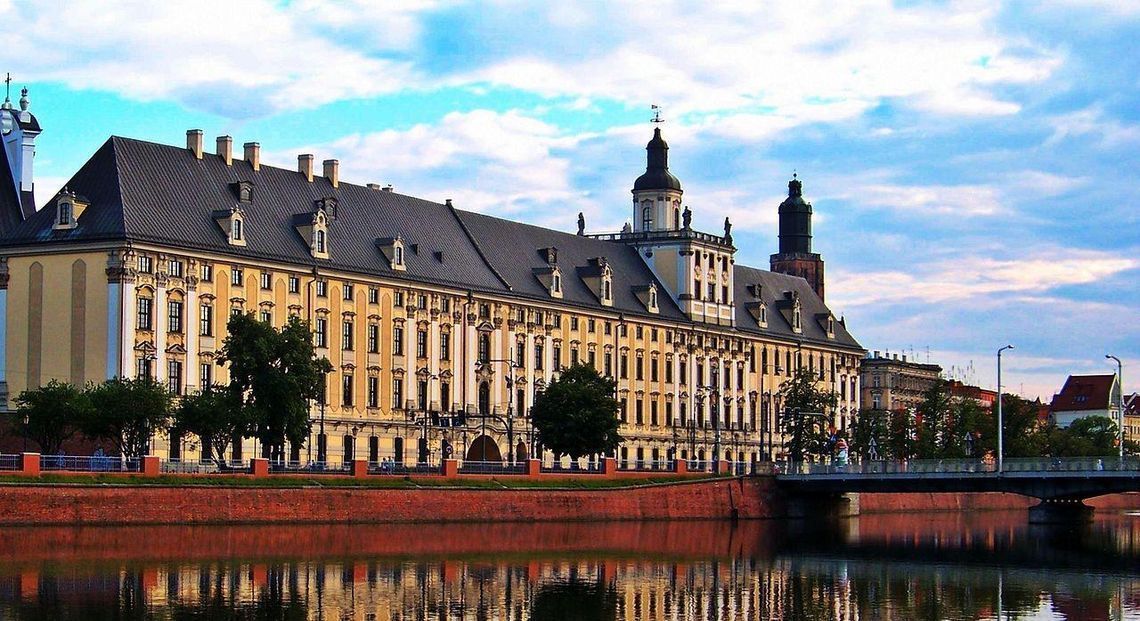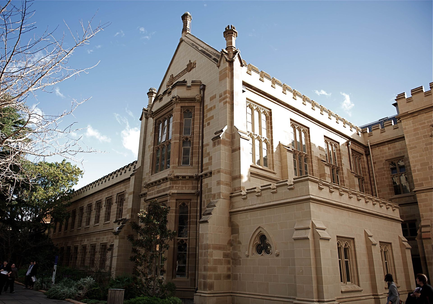
Higher education in Europe will not be as expensive as in the USA, Canada, or Australia. In many countries, a year of study costs around 1,500 USD, while in America this figure will be 20 times more — 30,000 USD. In Britain, prices are also much higher than in the EU countries — from 12,495 USD per year. At the same time, in terms of the quality of education, universities in Europe are not inferior to universities in English-speaking countries: among the top-100 best universities in the world according to QS, 16 are European. However, there are some specificities.
Features of education in Europe

- There are few programs in English. At the undergraduate level, English-taught programs are not universally available. Even in Germany, where English is quite widely known[1], public universities only offer 40 options (according to the DAAD search tool). On the other hand, at the Master's degree level, English-language programs have already become quite common.
- Affordable education in the national language. In the Czech Republic, Poland, Finland, Norway, Greece, and Estonia, education in the national language is completely free. The language requirements are high, however — not lower than the B2 level, and in Germany — up to C1.
- Discounts for students. The student card provides benefits throughout the European Union: public transport, accommodation, museums, and cafès, cost less for students.
- It gets even cheaper in Eastern Europe. In Eastern Europe, it is cheaper to study not only because of the low tuition fees but also because of the low cost of living. In countries like Russia, Poland, and Bulgaria, living expenses are 2-3 times lower than in Germany or France.
- Part-time work and employment. In most European countries, students can find employment and work up to 20 hours a week. You won't be able to earn a lot, but you can be compensated for food or housing costs. Also, many universities offer internships and help their graduates find work. For this, universities have special career centers.
Affordable Master's degree in Europe

Master's degree programs in Europe last 1-2 years, depending on the country of study. As a rule, a Master's degree must correspond to a Bachelor's degree. This differentiates European education from American. One of the few exceptions to this rule is Russia. There are other things to keep in mind:
- Language of teaching. The cost of studying depends not only on the country but also on the language and the type of program. For example, in Finland, you can study in Finnish and Swedish for free, including a Master's program. But English-taught programs are expensive — from 10,670 USD per year. There are also tuition-free Master's degrees in the national language in Norway, Czech Republic, Poland, Greece, and Estonia. In the rest of the countries, Master's programs in the local and English language will not differ much in price.
- Types of programs. MBA and medical courses are much more expensive than all other Master's programs. Studying for a Master of Business Administration is considered particularly prestigious and costs 10,670-16,005 USD per year in most European countries. The same is true about medical education.
- Study in English. Unlike the undergraduate degree programs, at the Master's level, English-taught programs are available in any major university. You may not find your specialty in one university, but it will definitely be in another.
Affordable universities in Europe
Western and Northern Europe
| # | University | City | Country | Undergraduate degree in the national language, year | Undergraduate degree in English, year | Master's degree in English, year | Dorm accommodation, month |
|---|---|---|---|---|---|---|---|
| 3 | Scuola Normale Superiore di Pisa | Pisa | Italy | free | n/a | free | free |
| 1 | University of Helsinki | Helsinki | Finland | free | 13,871-19,206 USD | 13,871-19,206 USD | n/a |
| 3 | Tampere University | Tampere | Finland | free | 10,670 USD | 6,402-12,804 USD | n/a |
| 2 | Aalto University | Helsinki | Finland | free | 12,804 USD | 16,005 USD | n/a |
| 4 | Norwegian University of Science and Technology | Trondheim | Norway | free | n/a | free | 427-640 USD |
| 1 | University of Oslo | Oslo | Norway | free | n/a | free | 382 USD |
| 3 | University of Bergen | Bergen | Norway | free | n/a | free | 320-534 USD |
| 36 | FH Vorarlberg University of Applied Sciences | Dornbirn | Austria | 44 USD | n/a | 44 USD | 262-413 USD |
| 11 | University of Florence | Florence | Italy | 166-2,828 USD | n/a | 166-2,828 USD | n/a |
| 18 | University of Strasbourg | Strasbourg | France | 196 USD | n/a | 273 USD | n/a |
| 6 | Free University of Brussels | Brussels | Belgium | 261-1,547 USD | 261-1,547 USD | 891 USD | 339-510 USD |
| 4 | University of Paris | Paris | France | 278 USD | 278 USD | 356 USD | 301-534 USD |
| 2 | TU Munich | Munich | Germany | 308 USD | 308 USD | 308 USD | n/a |
| 10 | Free University of Berlin | Berlin | Germany | 667 USD | 667 USD | 667 USD | n/a |
| 6 | Humboldt University of Berlin | Berlin | Germany | 673 USD | 673 USD | 673 USD | n/a |
| 9 | University of Granada | Granada | Spain | 809 USD | n/a | 876 USD | 213-1,814 USD |
| 6 | University of Valencia | Valencia | Spain | 887 USD | from 960 USD | 2,514 USD | 346-557 USD |
| 37 | University of Alicante | Alicante | Spain | 887-1,280 USD | n/a | 957-2,514 USD | 350-560 |
| 5 | University of Bern | Bern | Switzerland | 920 USD | 920 USD | 920 USD | n/a |
| 6 | University of Geneva | Geneva | Switzerland | 968 USD | 968 USD | 968 USD | 430 USD |
| 2 | Ghent University | Ghent | Belgium | 1,025 USD | 1,986 USD | 1,971-6,068 USD | 453-490 USD |
| 18 | UC Leuven -Limburg | Leuven, Dist, Hasselt, Diepenbeck, Genk | Belgium | 1,025 USD | 1,025 USD | 1,025-1,878 USD | 320-534 USD |
| 1 | ETH Zurich | Zurich | Switzerland | 1,414 USD | n/a | 1,414 USD | n/a |
| 1 | University of Vienna | Vienna | Austria | 1,592 USD | n/a | 1,592 USD | 315-587 USD |
| 9 | University of Graz | Graz | Austria | 1,592 USD | n/a | 1,592 USD | 302-507 USD |
| 11 | University of Siena | Siena | Italy | 1,921 USD | 1,921 USD | 1,472-3,150 USD | 320 USD |
| 46 | University of Orleans | Orleans | France | 2,956 USD | n/a | 259 USD | 185-689 USD |
There are many universities in Northern and Western Europe with affordable prices for education. In Germany, France, and Austria, prices in public universities are fixed by law, and in Norway and Finland, education in the national language is completely free. On the other hand, the high cost of living there "balances out" the low cost of education. The major expense in most countries is housing. Universities rarely have dormitories, so students have to rent apartments or rooms on their own.
- Germany. Education in German state universities is free for everyone, including foreigners. Students only pay administrative fees from 171 USD to 747 USD per year. These cover, for example, travel on public transport. Accommodation will cost at least 10,670 USD per year — having that much in your bank account is a requirement for a student visa. Scholarships such as DAAD can help cut costs. Another important condition: you will not be able to enroll in a Bachelor's program immediately after school if it lasts 11 years or less in your home country. First, you have to spend a year at the preparatory courses at Studienkolleg or in a university at home.
- Austria. In Austria, as in Germany, in public universities students pay fixed fees — 747-1,601 USD per year. It is still incomparably cheaper than studying in the USA or the UK. The requirements for a student visa depend on age: if you are under 24, you will need at least 6,402 USD for a year, if more — 11,417 USD. The minimum level of German for admission to a university is C1, but you can also enter preparatory courses with A2+.
- France. In all public universities in France, the tuition fee for foreigners is universal: 2,956 USD per year for Bachelor's and 4,023 USD for Master's degree programs. But some universities, for example, the University of Paris, gave foreign students partial benefits in 2020/21: now they pay the same as locals — 278 USD for Bachelor's and 356 USD for Master's programs[2]. However, English-taught programs, as a rule, are more expensive — 4,268 USD/year or more. To obtain a student visa, the applicant must have at least 656 USD on their account for each month of stay.
- Belgium. Prices in Belgian universities start from 1,067 USD per year. There are a few English-language undergraduate programs, and prices for them can go up to 4,268 USD. Most of the teaching is in French, Dutch or German. The minimum level of language proficiency is B2. It will take about 14,938 USD per year in living expenses, and for a student visa, it is necessary that the sponsor of the student earns at least 2,098 USD per month.
- Italy. Education in Italy is considered relatively inexpensive, the average cost is 2,134-3,201 USD per year. There are also completely free universities that even cover the cost of living and meals. For example, the Teacher Training School of Pisa. But the competition is very high there. Also, some universities give discounts to children from large and needy families. Accommodation will cost at least 6,500 USD per year. It is impossible to enter immediately after grade 11, first you need to take preparatory courses or study for a year at a university in your homeland.
- Finland. In Finland, foreign students can get a completely free education in both undergraduate and graduate programs. There is only one condition: the program must be in Finnish or Swedish. English-language programs are expensive — 10,000-12,000 USD/year. To obtain a student visa, you will need 7,170 USD per year, but the actual costs will be at least 10,670 USD/year. More money will be spent on housing in Finland, since many universities do not have residences.
- Switzerland. Studying in Switzerland is surprisingly cheap: on average it costs 960 USD per year. But in order to enroll, you will have to spend two years at a university at home or complete a one-year preparatory program at a local university. Teaching is done in French or German, the minimum language level is C1. The cost of living in the country is very high. For a student visa, you need a minimum of 23,112 USD per year.
- Norway. Education in Norway is free for all students, regardless of the language. You only need to pay small contributions of 27-54 USD. Though there are very few English-language programs — 15 in the whole country. And life in Norway is also not cheap: for a student visa you need at least 12,911 USD per year.
- Spain. You cannot study for free in Spain, but the tuition fees there are relatively low: they start from 854 USD per year, for example, at the University of Granada. The average cost in other public universities is 2,134-3,201 USD/year. At the same time, some universities offer discounts for students from large families. Living in Spain is also not very expensive: for a student visa you need to have 7,469 USD per year in your account. Because of this, Spain is one of the most affordable options among Western European countries.

Eastern and Southern Europe
| # | University | City | Country | Undergraduatedegree in the national language, year | Undergraduate degree in English, year | Master's degree in English, year | Dorm accommodation, month |
|---|---|---|---|---|---|---|---|
| 8 | Czech University of Life Science in Prague | Prague | Czech Republic | free | 205-3,330 USD | 205-4,443 USD | 96-160 USD |
| 17 | University of Gdansk | Gdansk | Poland | free | 1,171-2,903 USD | 1,639-1,814 USD | 128 USD |
| 4 | Warsaw University of Technology | Warsaw | Poland | free | 1,601-2,241 USD | 1,067-2,881 USD | 107 USD |
| 1 | Charles University | Prague | Czech Republic | free | 2,134-9,048 USD | 2,134-14,807 USD | 160 USD |
| 2 | Masaryk University | Brno | Czech Republic | free | 2,347 USD | 2,134-13,871 USD | 71-192 USD |
| 6 | University of Wrocław | Wroclaw | Poland | free | 3,201-3,895 USD | 3,735-3,895 USD | 169-243 USD |
| 3 | Tallinn University | Tallinn | Estonia | free | 3,521-4,908 USD | 1,948-4,268 USD | 181-219 USD |
| 1 | University of Tartu | Tartu | Estonia | free | 4,055-5,335 USD | 4,055-6,402 USD | 57 USD |
| 2 | National and Kapodistrian University of Athens | Athens | Greece | free | 6,402 USD | 0-6,402 USD | n/a |
| 3 | Aristotle University of Thessaloniki | Thessaloniki | Greece | free | n/a | 0-5,335 USD | free |
| 1 | University of Crete | Heraklion, Rethymnonon | Greece | free | n/a | 0-4,268 USD | free |
| 7 | Estonian Business School | Tallinn | Estonia | n/a | 2,454-2,700 USD | 2,641-3,601 USD | n/a |
| 1 | Eötvös Loránd University | Budapest | Hungary | 1,067-1,707 USD | 3,841-8,963 USD | 2,774-8,942 USD | 83-193 USD |
| 6 | University of Pecs | Pecs | Hungary | 1,067-4,802 USD | 3,841-8,109 USD | 4,695-11,737 USD | 118 USD |
| 3 | University of Szeged | Szeged | Hungary | 1,174 USD | 3,201-6,615 USD | 4,055-8,749 USD | 53 USD |
| 5 | Klaipeda University | Klaipeda | Lithuania | 1,408-2,769 USD | 1,408-3,041 USD | 2,988-4,375 USD | 59-128 USD |
| 2 | New Bulgarian University | Sofia | Bulgaria | 1,440 USD | 1,440 USD | 1,601 USD | 75-107 USD |
| 14 | Varna University of Economics | Varna | Bulgaria | 1,601 USD | 1,601 USD | 3,201 USD | 75-107 USD |
| 15 | Ventspils University of Applied Sciences | Ventspils | Latvia | 1,622-3,201 USD | 2,241-5,335 USD | 2270-3410 | 51-98 USD |
| 4 | Latvia University of Life and Sciences Technologies | Jelgava | Latvia | 1,665-3,201 USD | 2,134-4,268 USD | 2,347-4,268 USD | 89-144 USD |
| 4 | Vytautas Magnus University | Kaunas | Lithuania | 1,781-7,440 USD | 2,804-8,118 USD | 4,256-5,108 USD | 160-192 USD |
| 10 | Varna Free University | Varna | Bulgaria | 2,049 USD | 2,049 USD | 3,201 USD | 75-107 USD |
| 1 | University of Latvia | Riga | Latvia | 2,347-4,268 USD | 2,347-5,122 USD | 2,523-6,402 USD | 107-288 USD |
| 2 | Vilnius Gediminas Technical University | Vilnius | Lithuania | 2,804-19,169 USD | 1,781-3,149 USD | 3,150-4,518 USD | 117-160 USD |
The universities in Eastern and Southern Europe are considered less prestigious than in Western and Northern. But education there is also good. St. Petersburg State University, for example, is considered one of the 50 best universities globally to study for a Master in Management[3]. In addition, these universities have many English-language Bachelor's programs — many more than in Western Europe. And education in the national language in many countries is completely free. Living expenses are about as low as it gets: universities have dormitories that cost 107-160 USD per month, so you won't have to spend a lot of money on accommodation.
- Russian Federation. Russian universities offer a good balance between price and quality — the cost of a single year ranges from 600 to 6,402 USD, averaging around 2500. The majority of programs are taught in Russian, but there is a growing number of options in English, especially at the graduate level. Russian universities offer about 15000 state-funded seats for international students. To apply for a program in English, you will need a certificate of previous education, a motivation letter, and IELTS/TOEFL results (unless you are a native English speaker). An interview is also relatively common. You can learn more on the official website for international students in Russia.
- Czech Republic. Studying in Czech is completely free. For admission, you must pass a language exam at the B2 level. You can prepare for it both at home and at a university in the Czech Republic. There are also English-language programs, but their prices start at 3,000 USD per year. To obtain a student visa, you need to have 3,735 USD in your account per year of study.
- Poland. Just like the Czech Republic, in Poland education in the national language is free. Universities accept students with a C1 level and above. But in general, knowing Polish is not necessary to study, there are many English-language programs in the country. For non-EU citizens, education costs 2,000-3,000 USD per year. For EU citizens, prices will be lower. A year of living in Poland will cost at least 4,268 USD.
- Bulgaria. Education is conducted mainly in Bulgarian, but there are also English-language programs — about 20% of total. There are also programs in Russian, German and French. The average cost of education is 2,000-3,000 USD per year, at least 4,268 USD will be spent on living. Bulgaria is a member of the European Union, so Bulgarian education can be a good start for immigration to the EU.
- Hungary. In Hungary, compared to other European countries, there are many English-language programs. There are almost two hundred of them at the undergraduate level[4] alone. There are programs in other languages, too. The average tuition fee is 3,201-5,335 USD per year and about 7,469 USD will come in living expenses. But the costs can be reduced with the help of scholarships and grants offered by the government and universities.
- Greece. Education in Greek public universities is free but available only in the national language. It can be learned in the year-long preparatory courses at universities, tuition there costs only 854 USD. There are also Master's programs in English, but most of them are paid. The minimum monthly budget is 320-427 USD, which is quite cheap for Europe. And because of their low cost, local medical programs are especially popular. Prices start at 1,601 USD per year.
- Baltics. Education in the Baltic countries is becoming more and more popular among foreign students. In Estonia, for example, the number of international students has doubled since 2014. Students are attracted by relative economic well-being, a large number of English-language programs and low tuition fees: in Latvia and Lithuania, prices start from 1,601 USD per year, in Estonia — from 3,201 USD. Moreover, education in the national language in Estonia is free.
Choosing an academic program is a very complex, energy- and time-consuming process.
We will help you determine what to expect from studying abroad, analyze your experience, and select the most suitable programs.






